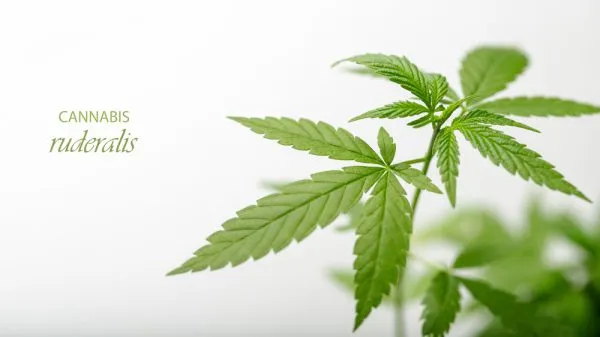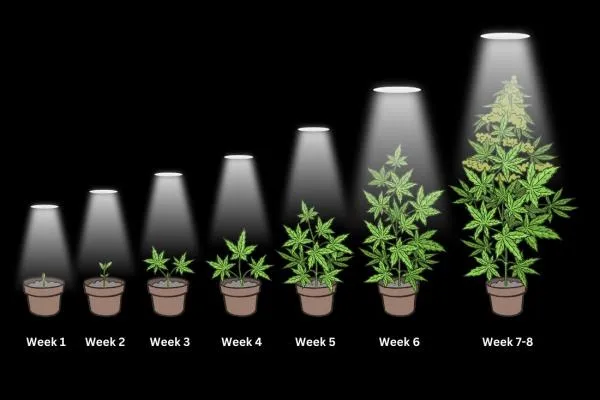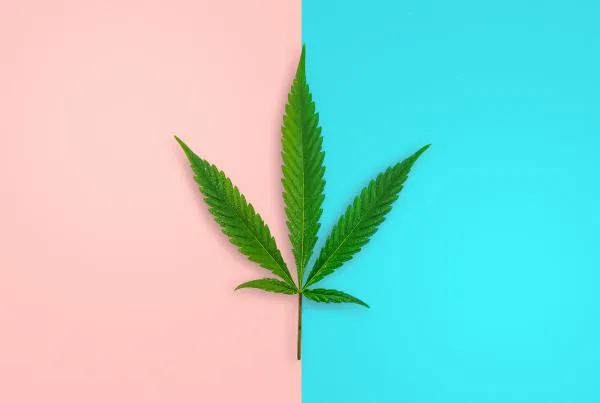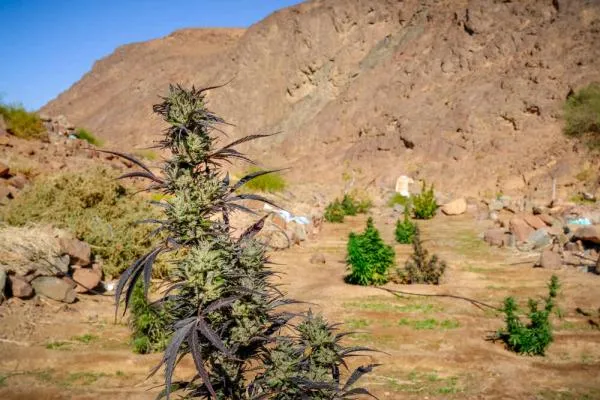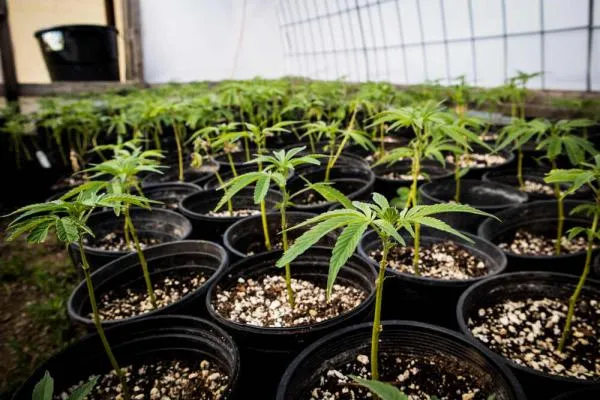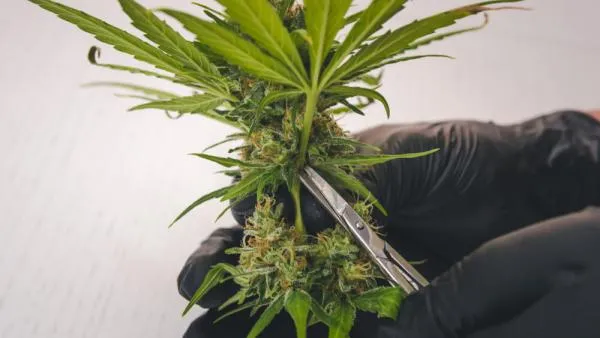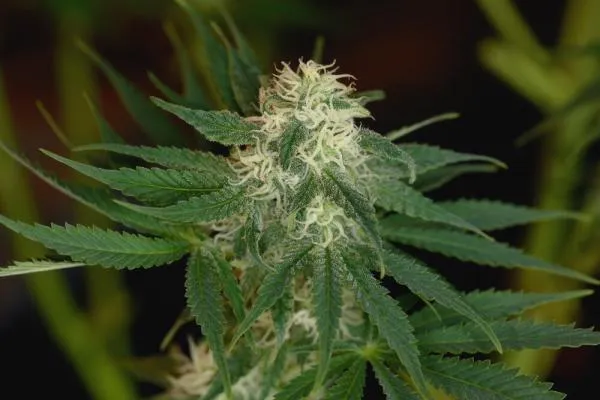Suppose you have ever grown autoflowering cannabis plants before. In that case, you will know they flower without the need to switch your timers to 12/12. Whilst photoperiod cannabis plants are light cycle dependent, autos possess a unique genetic trait thanks to the Ruderalis gene.
If you are not familiar with cannabis ruderalis, then this article will explain all you need to know! Covering the origins, its natural habitat and growing conditions, key characteristics, how Ruderalis differs from indica and sativa, and how Ruderalis has been used for cannabis breeding.
What is Cannabis Ruderalis?
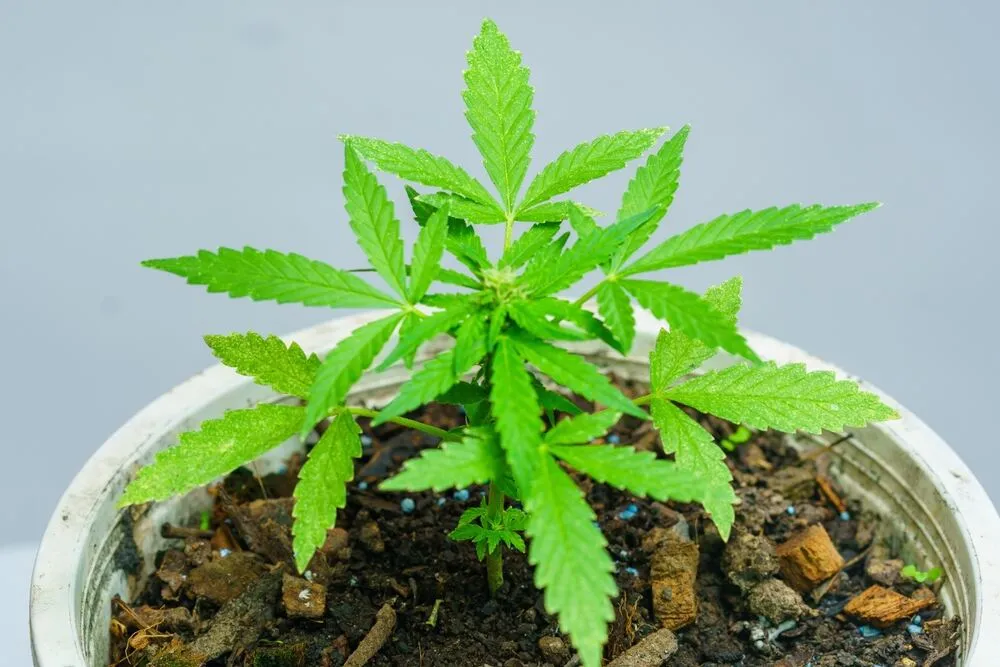
Ruderalis is a fast-flowering, short-sized plant that will automatically begin to flower and produce buds from 4 weeks from the germination date. The ruderalis genus is well known for being a tough, resilient and easy-to-grow plant that can be planted outdoors during any season, as long as the weather permits. Below is a breakdown of the origins and discovery of Ruderalis, as well as its natural habitat.
The origin and discovery of Ruderalis
The cannabis Ruderalis genetic was first discovered in Southern Siberia in 1924 by a Russian botanist, Janischewski, in the Volga River system. Now you may think, hang on a moment, how does a cannabis plant survive in such harsh conditions and such a cold climate like Southern Siberia?
You will also be surprised to know that apart from being discovered originally in Russia, the cannabis Ruderalis genetic has been found in Central and Eastern Europe, the United States and Canada.
Natural habitat and growing conditions
Whilst indica, sativa and land race cannabis plants are found in parts of the world where the weather is typically hot, cannabis Ruderalis can be found growing naturally in cold and harsh environments where there is a short summer season.
It is actually the challenging growing environment that allowed Ruderalis to produce a short vegetative period and a quick flowering time of only 8-9 weeks, enabling it to mature in time before the cold set in, thereby limiting growth.
Key Characteristics that Make Ruderalis Unique
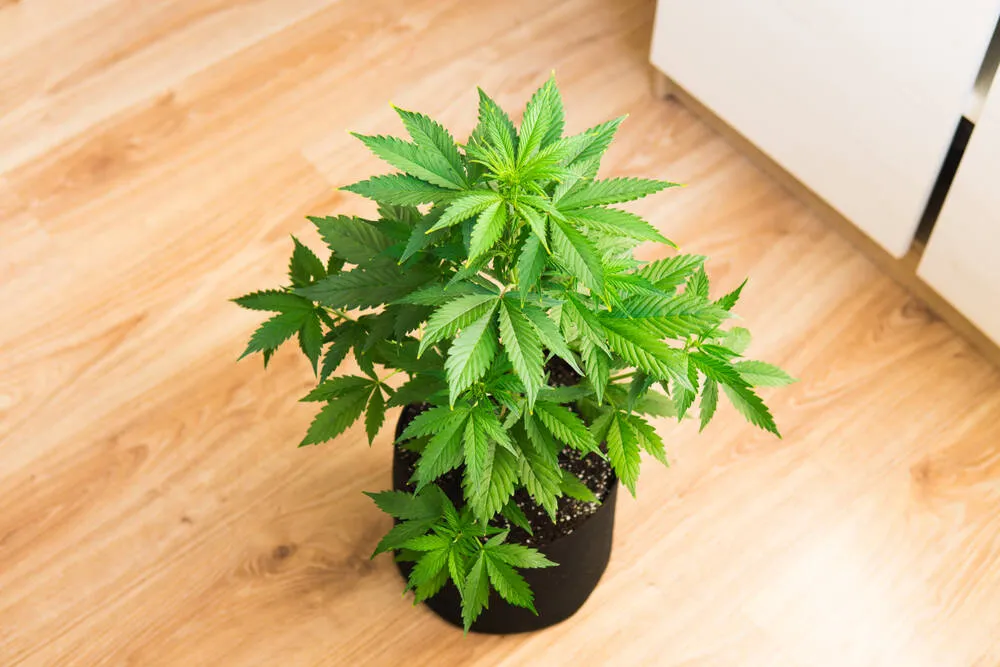
As the name suggests, the plants will begin to flower automatically. Indoors, autos can be grown under 18-20 hours of light and will produce buds, without the need for 12 hours of light and 12 hours of darkness. Below is a brief list that outlines the key characteristics that make the Ruderalis genetic strain unique.
Autoflowering trait and what it means
- A short vegetative growth period of 28 - 30 days.
- Ruderalis have a short and dense growth structure.
- They do not stretch much once flowering begins.
- Tough and resilient plants can endure cold environments.
- Short flowering times ranging between 7-9 weeks.
- They do not rely on typical light cycles to flower.
- Well adapted to short summer seasons.
Size and growth cycle of Ruderalis plants
One of the reasons autos became so popular among indoor and outdoor growers is that they do not grow tall, with a quick turnaround time. From seed to harvest, autos typically require 10 to 11 weeks. They are an excellent choice for growers who want a stealthy, low-profile, and discreet crop outdoors.
- Autos will grow for 4 weeks in the vegetative stage
- Autos will grow for 6-7 weeks in the flowering stage
THC, CBD, and cannabinoid profile of Ruderalis
The original Ruderalis genetic before modern-day breeding programmes was a low THC variety with higher levels of CBD. However, due to crossing the genetic line with potent and high THC photoperiod strains, autoflowering cannabis plants are now classed as plants on par with photoperiods ranging as high as 25% THC.
How Ruderalis Differs from Indica and Sativa
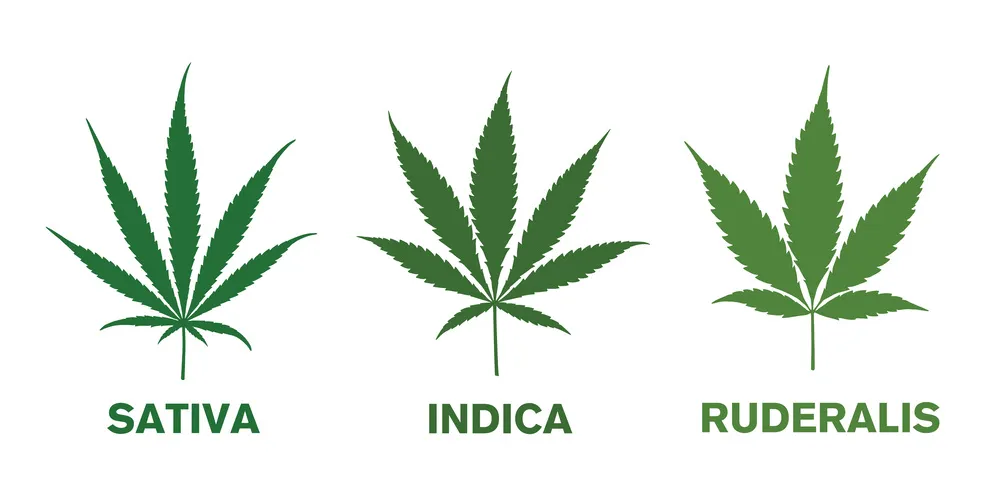
Before autoflowering cannabis plants entered the cannabis scene, growers had the choice of indica, sativa or hybrid strains. Indica cannabis plants could be found in landrace form, growing in countries such as Afghanistan, Pakistan, the Hindu Kush region, and Nepal. Sativa genetics can be found naturally growing in more tropical climates near the equator, such as Asia, Africa, Colombia, Mexico, Thailand, and Jamaica.
Growth patterns and life cycle comparisons
Cannabis plants boast a wide range of genetic diversity. Below is a short list of the differences in growth pattern and life cycle comparison between indica and sativa cannabis plants.
Indica cannabis characteristics
- Indica cannabis plants are photoperiod.
- A short flowering time ranging from 6-7 weeks.
- Tight and short internodal distance.
- Grow to a height ranging from 90 - 120 cm.
- They double in size once transitioning to flower.
- They will grow with fat and broad fan leaves.
- Produce a short and bushy growth structure.
- The buds are tight, dense and golf ball-shaped.
- The effect is considered relaxing and heavy-bodied.
Sativa cannabis characteristics
- Sativa cannabis plants are photoperiod.
- A long-range flowering time between 11-13 weeks.
- Long internodal spacing during vegetation.
- Grow to a height ranging from 150 - 210 cm.
- Will produce long and narrow fan leaves.
- It can triple in size once flowering is induced.
- Have a lanky and elongated growth structure.
- The buds are long and airy.
- The effect is cerebral, upbeat and euphoric.
Ruderalis cannabis characteristics
- Autoflowering plants do not require a photoperiod.
- They will begin to flower after 4 weeks from germination.
- Produce a low-profile plant that ranges in height from 30 to 90 cm.
- Contain little THC and a higher CBD cannabinoid profile.
- 10-11 weeks from seed until harvest.
- It can be planted outside from March until October.
- Produces a small number of branches.
- The plants will grow with broad fan leaves.
Differences in potency and effects
Below are some examples of different indica and sativa landrace strains regarding THC levels, showcasing their potency.
Indica cannabis potency levels
- Hindu Kush - 19% THC
- Black Domina - 16% THC
- Afghan - 19% THC
Sativa cannabis potency levels
- Colombian Gold - 19% THC
- Durban Poison - 24% THC
- Buddha - 19% THC
Adaptability to climate and environment
Whilst the original Ruderalis genetics can grow in the wild in some of the coldest and harshest environments on the planet, they are tough, sturdy and resilient plants. Indica or sativa cannabis plants would not adapt to the chilling cold climate found in Russia and parts of Canada; however, the Ruderalis plant can adapt, allowing it to vegetate and flower at the right time to produce a grower with an adequate harvest of buds.
How Ruderalis is Used in Modern Cannabis Breeding
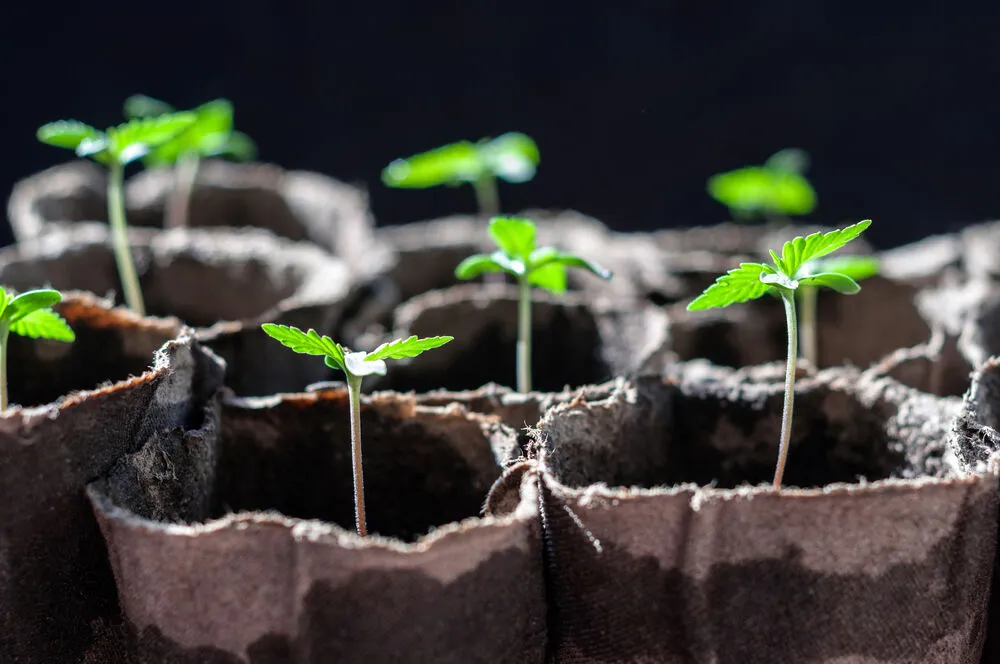
Breeders were able to take photoperiod cannabis plants and cross them with the Ruderalis genetics, creating autoflowering hybrids that possess the best of both worlds. Gone were the days of low potency and short-sized plants.
Autoflowering cannabis plants revolutionized the cannabis market when they first hit the mainstream. Growers could now grow cannabis plants outside without needing to wait for the summer and autumn seasons to end. In fact, growers can experience a plentiful harvest outdoors every 10-11 weeks, opening the door to the concept of perpetual harvests with minimal maintenance involved.
Nowadays, there is an enormous amount of top-quality feminized autoflowering cannabis plants that offer top-quality yields, potency, resin production, incredible taste and aroma, and are as popular as photoperiods in comparison.
Is Ruderalis Valuable to Home Growers and Consumers?
If we are discussing the original Ruderalis landrace genetics, then the short answer is no. However, if we are referring to modern-day autoflowering hybrids, then absolutely! Home growers can produce some phenomenal yields indoors using an 18/6 or 20/4 hour light cycle. There's no need to worry about tall and lanky plants; grow discreetly outdoors and enjoy a fast turnaround time from seed to harvest of just 70-77 days in most cases.
Pros and cons of growing Ruderalis or autoflower strains
Suppose you're a first-time grower and like the idea of growing a resilient, fast-producing, and low-maintenance auto. In that case, I recommend investing in some seeds and seeing what all the hype is about. I would also encourage you to check out the list below of the pros and cons associated with autoflowering cannabis plants, to help you make that final decision!
The Pros
- Autos are a low-maintenance plant ideal for beginner or first-time growers.
- The quality they produce is on par with any indica, sativa or hybrid photoperiod.
- Outdoors, a grower can achieve perpetual harvest every 10-11 weeks.
- In a hot climate, autoflowering genetics flourish and yield impressive results.
- Indoors, autos do not grow tall and are ideally suited for growers with limited space.
- Autos are well adapted to cold weather and will perform well in all climates.
- They react well to the low-stress technique involving tying down.
The Cons
- Due to the short vegetative cycle, plant training is limited.
- Some autos can grow short and produce low yields.
- Autos do not like to be repotted and can become stunted as a result.
- Avoid high-stress training techniques such as topping and super cropping.
Who should consider Ruderalis-dominant strains?
Everyone should consider modern-day autoflowering strains, which experts have carefully bred to produce high potency, rich terpene profiles, and are reliable producers. There are many benefits to growing an autoflowering version of your favorite indica, sativa, or hybrid, and I strongly recommend autos for first-time growers, especially those living in a sunny climate, such as Southern Europe.
